



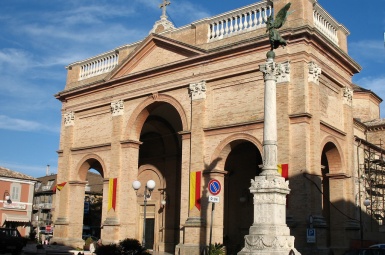
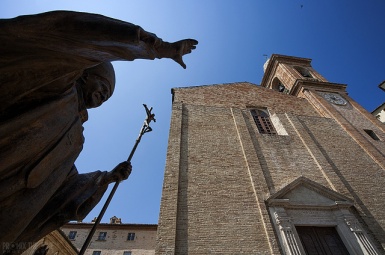
At just 20km from Ascoli Piceno , 12 km from S. Benedetto del Tronto and just 2 km from the SS . # 4 Salaria , Monsampolo del Tronto has a beautiful view overlooking the valley of the Tronto , opens on the Piceno hills , the Sibillini Mountains, the Gran Sasso mountain and the Adriatic. Consisting of approximately 3/4 of the hill and 1/4 plain is located on the left side of the river Tronto.
The name originated agiotoponimica , Monti Sancti Pauli (1100 ) , alludes to the holder of the first castle church from which the town took its name. The inhabited , construct almost triangular in shape , stands on a hill very pleasing . The earliest traces of human life dating back to prehistoric times. Artifacts found in Contrada Treazzano testify contacts made by the indigenous settlements with the Mycenaean Civilization (1250-1100 BC. ) . The first written submission dates back to 1031 years in which a wealthy landowner , Giso Alberto , donated to the Church fermana half of the territory of Monsampolo together with the Church of St. Paul . S. Corradi in his ” Spelling vulgar “, published in Rome in 1646, traces the origins of Monsampolo the coming of a French knight , Monsù of St. Paul, on the grounds that at that time in the capital there were old documents that prove it.
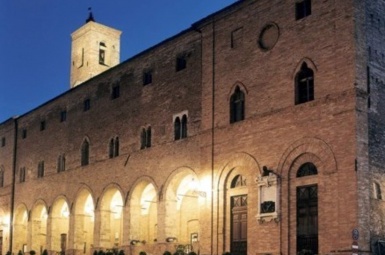
In a manuscript of the late thirteenth century . our name is mentioned as ” Ripatransonis “, the ” repair ” of Transone , personal name of Germanic origin . The town is in fact born from the unification of four castles in 1198 to the Transone family or Dransone . Ripatransone is an art city with numerous museums , lives off tourism, furniture and farming , emerging in the production of oil and wine . It is called the Belvedere Piceno for the wide panoramic view it offers.
Known as the Belvedere del Piceno Ripatransone has unmatched views that stretch from the Gran Sasso Monti Sibillini , the Conero and Gargano , to the Dalmatian coast . Inhabited since prehistoric times , it was an important center of civilization Piceno (IX -III century BC) due to its location inaccessible. In later times its importance grew up to be elevated to episcopal city in 1571.
One of its main features is the rich historical and artistic heritage is recognized and felt by its citizens to whom we owe the founding of the Museum since 1877.
Today Ripatransone has several museums and collections filled in a unique museum complex which includes its museums, the historical archive , a rich library , the Archaeological Museum , the collections such as the Art Gallery of Palazzo Bonomi ( works by Crivelli , Fazzini , etc.). , gipsoteca One Gera, museum of the Risorgimento and ethnographic museum in the world with curiosity.
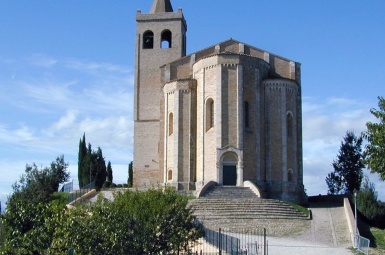
Offida is a town of ancient origin . E ‘ was founded by the Pelasgians , was first inhabited by Picene , then by the Romans and later by the Lombards. Experienced its heyday in the Middle Ages and became a free municipality in sec. XIII. Even today, the structure of Offida is typically medieval . Established in the stone age theory endorsed by numerous archaeological remains found in the area . In a most recent period , the origins of Offida would be attributed to piceni who founded it , which stemmed from a group of young Sabines .
On the origin of its name, there have been several hypotheses proposed by scholars during el time :
OPPIDA ( fortified town )
OPHYS (a Greek word mean snake )
OPHIDA ( hill opulent )
And ‘ considered one of the most beautiful villages in Italy . Its museums , its rue and the town hall with porch and fifteenth-century paintings by Pietro Alemanno ( 1490) Simone de Magistris (1590 ) give an appealing charm that takes visitors on a journey back in time in which to enjoy even craft traditions such as full lace-pillow . Featuring a spectacular charm is also the Teatro Golden Snake baroque style with elegant balconies embellished with gilt decoration , 50 stages spread over 3 orders and an entrance adorned by four statues of four muses. Built on a rocky outcrop , stands the charming church of Santa Maria della Rocca Romanesque- Gothic structure with three polygonal apses and three fifteenth-century frescoes . Paintings, reliquaries, crosses and other valuable items are kept in the church of St. Augustine, in that of St. Benedict and St. Mark’s Square and the new while the collegiate church of Our renaissance has a porch and a terracotta cornice , decorated with friezes of the fifteenth century.
The old town is enclosed within the walls Castellane (XII – XVI). The former civil hospital opens the tourist route that continues for Course Golden Snake up in Piazza del Popolo dominated by the Town Hall , dating from the eleventh and twelfth centuries .
Among the pearls of Offida remember also the Church of St. Augustine (sec. XIV – XVIII) with the adjoining chapel of the Eucharistic Miracle , the Church of the Addolorata (XV ) which houses the coffin of the dead Christ , the Collegiate Church (XVIII century) which houses the relics the patron saint of the town , the Museum of Offida and the Convent of the Benedictine Nuns with the Church of San Marco. The former convent of San Francesco there is also the Enoteca Regionale which is worth a visit.
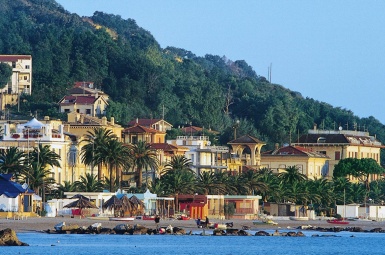
Called the Pearl of the Adriatic, is located in the center of “Riviera delle Palme”, in the Marche. The beach of fine sand, the crystal clear waters gently sloping , green lush palm trees and white and pink oleanders in flower can only recall suggestions related to exotic destinations : Grottammare offers all this without going too far .
Grottammare overlooks the Adriatic coast between the green of its pine forests, orange groves and palm trees , with its golden beaches and the clear glow of the sea. Clean water , the sandy coastline , the charm of the picturesque views of the old town and the lush vegetation , a fresco of colors and scents forgotten that make our city unique .
Grottammare has ancient origins. There are traces of human dating back to Neolithic times. On its territory was discovered a necropolis dating back to picena VII -V century BC
Possession in the Middle Ages, the Abbey of Farfa , was given in Fermo in 1214 by Aldobrandino d’Este. Between the thirteenth and sixteenth centuries was long disputed between Fermo and Ascoli . The current system of fortified walls dating back to the sixteenth century , characterized by violent disputes with neighboring communities and from pirate attacks .
From the eighteenth century began to expand towards the coast , whose urban plan , designed by the architect from Lombardy Peter Augustoni , you have to Pope Pius VI.
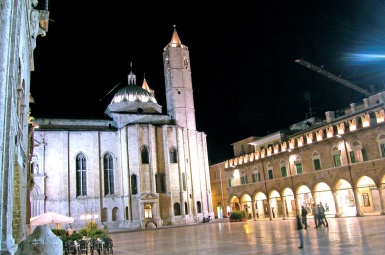
” Ascoli Piceno is one of the most beautiful small towns in Italy, and I do not see that the other looks like . André Gide the preferred … beautiful as some cities in the South of France , not so much for this or that monument, but for the whole, the quality anthology , the charm that comes from anything and everything. Is necessary to have walked , starting from Piazza del Popolo , Piazza Italian which together with that of San Marco in Venice gives more of an impression of the room, surrounded by arcades, closed by the wonderful apse of St. Francis …
Its historic center constructed almost entirely of travertine is among the most admired of the region of central Italy, by virtue of its rich artistic and architectural . Retains a variety of noble towers and bell and this is called the City of a hundred spiers . In it you will find the Renaissance Piazza del Popolo, considered among the most beautiful squares in Italy .
The city’s origins are shrouded in mystery , but it is pretty sure that there was a human presence from the Stone Age and that the area was already inhabited in the Neolithic period to the Italic peoples . According to a tradition Italic mentioned in ancient literature ( Strabo , Pliny , Festus ) the city was founded by a group of Sabines, who were led by a woodpecker, a bird sacred to Mars , during one of their migrations that ver sacrum . The Sabines would merge with other indigenous peoples , giving rise to the Piceno , including Ascoli in Roman times became the main center thanks to its location on the Via Salaria , which connected the salt marshes at the mouth of the Tiber to those of the Adriatic coast.
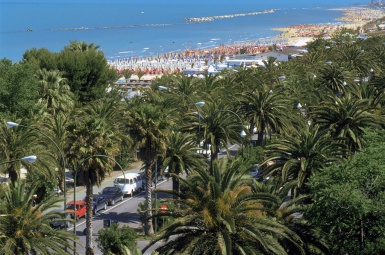
In the seventeenth century , that of San Benedetto del Tronto was still a small fishing village and had about 600 inhabitants . The boldness and courage of the sailors who have gone towards more unknown , from Africa to Greenland , have made this city one of the most important fishing ports in Italy . The old village costituuisce the plot of the old town, the characterization fishing remains one of the cornerstones of the city’s history that lives on sea-related activities .
Building on its strong vocation for the reception of its waterfront , its landscape , its historic port activity and, above all , of his countless hotel deals , San Benedetto del Tronto is counted among the most important seaside towns of the Marche Riviera . The latter provides its guests with a long beach of fine golden sand framed by a promenade with many stately palm trees , also on the beach and they have helped to identify it as the “Riviera delle Palme” . Visiting San Benedetto is to discover a holiday destination full of innumerable possibilities that integrate the sea and intoxicate every way that ensures complete satisfaction.
Also known as the Riviera, words then extended to the neighboring cities of the coast and inland after the birth of tourist information , attracts visitors from all over Italy and Europe and is the main tourist resort of the Marches for the number of as well as the most important fishing center of the Adriatic and one of the most important in Italy thanks to the eponymous harbor.
Since 1999, the city was awarded with the Blue Flag uninterrupted star, the recognition that the FEE (Foundation for Environmental Education ) releases to the coastal resorts that meet European quality criteria related to parameters of bathing water and the services offered , taking into account such example the cleaning of beaches and marinas .

Acquaviva Picena is a village situated on the ridges piceni a short distance from the Adriatic coast and the magnificent views of the Apennines enjoying an incomparable among the many shades of the surrounding landscape . Visiting Acquaviva Picena you are immersed in a magical medieval atmosphere , walking through the streets of downtown seem to perceive sounds and vitality of the story that he lived , it is an experience of the past with its imposing fortress that seems to protect the value of a whole people … From elevation mid- hills of the town ( 359 m above sea level) you can see , in the days of good weather , as well as the highest peak of the Sibillini ( Mount Carrier ) , even the most distant Abruzzi mountains ( Gran Sasso , Majella ) .
A picturesque town built in the Middle Ages , which stands on a hill giving visitors an enchanting view that sweeps from the Sibillini Mountains up to the Abruzzi mountains and sea coast . Acquaviva preserving a wealth of important and specific rural craft tradition in the processing of straw, famous throughout the region . The ” pagliarole ” ( baskets , vases and various household objects made entirely of straw) represent an ancient craft , that of the ” basket weavers ” , handed down from generation to generation with passion, dedication and attention to detail and finishing.
 English
English Italiano
Italiano  Deutsch
Deutsch  Français
Français 